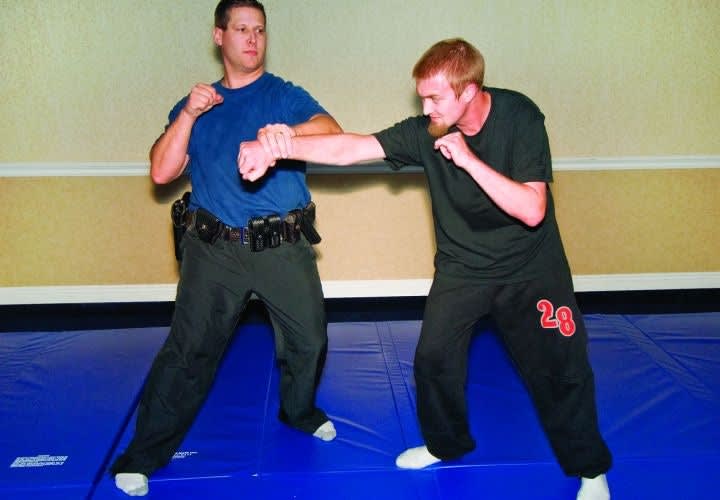I don't suggest countering by putting two hands on your gun because that leaves you vulnerable. That leaves the aggressor with one hand free while both of your hands are tied up. Especially if the aggressor is fired up on drugs or alcohol, there's a probability the two-handed defense may not work. You don't want to use any method that doesn't work.
The technique in these photos does work. If you strike anybody's neck, I don't care what they're on, they're going to react; there's no way around it. That's the reason we chose this technique as a counter, versus strikes to the radial nerves or the median nerves of the arms. A lot of people teach that, but it's not 100-percent effective. If your technique's not 100 percent, you don't want to utilize it, because you don't want to take a chance. You want to have a counter that's clean, that's quick, that's fluid, and that works for you.
And again, these techniques work for persons of all body types. [PAGEBREAK]
Counter to Gun Grab #2
This sequence is another counter to a gun grab attempt. But this time a different tactic is used to bring the attacker under control. In photo 1, the subject initially does a gun grab. Then he attempts a haymaker, which is that right hand he's throwing at the officer. The officer counters that first with a rotation of his hips. Then, as shown in photo 2, he uses his reaction hand and his reaction side and throws an elbow to the aggressor's jaw.
From there, in photo 3, the officer puts a reverse wrist lock on the individual, and puts him down into a cuffing position. When the officer turns the subject's wrist over, he has the whole arm locked out.











